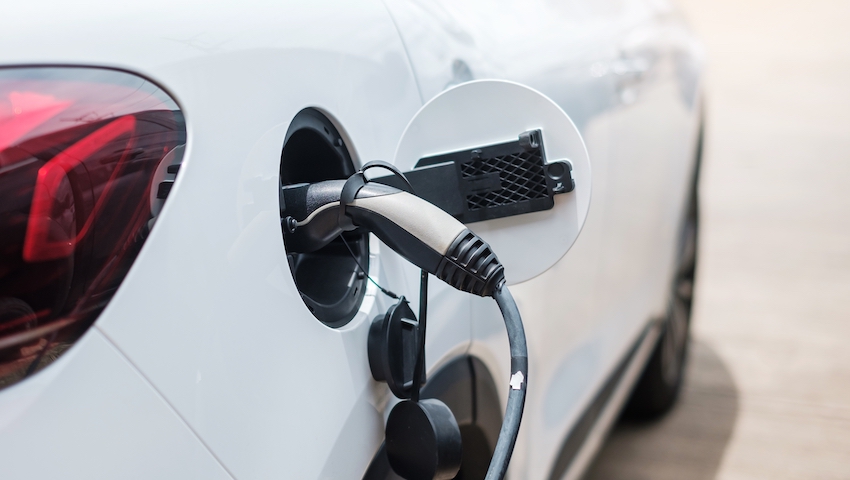
How to charge an electric car: Types of charging cables and how to use them
If you’re new to the world of electric vehicles (EVs), your first question will probably be “where can you charge an electric car?”. There are three main ways that EV owners charge up their vehicles: at home, at work, or at public charging points.
Home charging is a particularly convenient and cost-effective method for plug-in cars. To do this, you can either use a standard 3 pin socket or opt for a special home charger. Home chargers are often the preferred option as they can provide around 7kW of power, which is much higher than the power output of a regular socket. It is possible to have a charger installed in your home for around 1,000 USD or under 1,000 GBP. Many countries offer grants for purchasing this technology.
There are a growing number of public charging networks, allowing people to charge their cars at service stations, in car parks, or at roadside charging stations. Many EVs come with their own GPS navigation systems which display the chargepoints along the route. There are also applications such as ZapMap, showing results for the nearest sites, the type of chargers, and the companies who own them. It is important to take your own charging cable with you as not all public chargers will include cables or connectors.
How long does it normally take to charge a car battery?
There are several factors that can affect the charging time of the vehicle. First of all, it will depend on the size of the battery and how full or empty it is. The second thing to consider is the maximum charging rate of the battery and of the charger itself. The higher the vehicle’s maximum rate is, the quicker you should be able to charge it at a high output chargepoint. Moreover, people often forget that the outside temperature can also affect the battery charge. Colder environments result in longer charging times and reduce the efficiency of the charger and vehicle.
However, it could be argued that the most important factor is the battery’s power source. There are three main charging categories: level 1 (slow), level 2 (fast), and level 3 (rapid or supercharging). Level 1 is when the car is plugged into a regular household outlet (120-Volt). The speed is roughly 3-5 miles per hour, meaning that it could take days to get a fully charged battery. Level 2 chargers (208-Volt to 240-Volt) typically have a charging speed of around 12 to 80 mph, whereas level 3 stations can have a speed of up to 20 miles per minute.

Image of the charging cable is taken from autodoc.co.uk
EV charger cable and plug types
There are different types of cables and plugs designed for different types of chargers, charging modes, and power outputs, as well as either AC or DC charging.
AC charging:
- Type 1:
This type is more common in Asia and North America than it is in Europe, as there are more type 1 charging stations available to use there. It is a single phase connector with a power output of up to 7.4 kW.
- Type 2:
The triple phase plug is the standard one for Europe. It can typically achieve a power rating of around 22 kW when used with a private charger. This plug type is compatible with all mode 3 cables and most charging stations have connectors with a type 2 plug.
DC charging:
- Combination plugs (CCS):
These are similar to the type 2 plugs, except they include two additional power contacts for DC charging. This combination allows the CCS connector to support both AC and DC charging. They are used for fast charging.
- CHAdeMO:
This type is mostly used by Japanese manufacturers such as Toyota and Mitsubishi, as well as US EV giant Tesla. The cables have a power capacity of up to 50 kW and therefore allow for rapid charging.
Common cable types:
- Mode 2:
This can be used for connecting the vehicle to a regular domestic power socket.There is an In-Cable Control Box (ICCB) which enables communication between the vehicle and charging port.
- Mode 3:
This type is used to establish a connection between the EV and the charging station or wall box. Most of the time, charging stations will provide mode 3 connector cables. Charging requires a mode 3 cable with either type 2 to type 2 or type 2 to type 1 plugs.
How to use charging cables
Once you know that you have the right cable type and charger, you can connect the cable to the vehicle and plug it at the power source. To extend your car’s battery life, try to avoid charging the battery to 100% or repeatedly letting the charge go below the recommended range. Manufacturers usually recommend maintaining a charge of between 30% and 80% of the battery’s capacity.
Infolinks:
https://www.autodoc.co.uk/info/hybrid-cars-vs-plug-in-hybrid-cars-how-they-work-and-which-is-better
https://www.consumerreports.org/cars/hybrids-evs/how-to-decide-if-a-hybrid-plug-in-hybrid-or-fully-electric-c-a6216376327/





